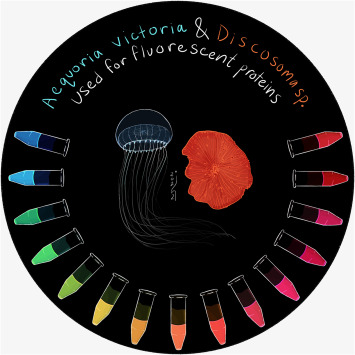The Living Umbrellas: Unraveling the Mysteries of Comb Jellies
Imagine a creature that glows with an otherworldly beauty, propelling itself through the ocean with graceful, pulsating movements. This mesmerizing spectacle is brought to you by comb jellies, often hailed as the “aliens of the sea.” In this article, we’ll delve into the fascinating world of these gelatinous wonders, exploring their biology, behavior, and the enigmatic qualities that make them a subject of scientific marvel.
I. The Marvelous World of Comb Jellies
A. A Symphony of Light in the Ocean Depths
At first glance, comb jellies, or ctenophores, may appear like ethereal ghosts of the ocean. Their transparent bodies refract light, creating a stunning display that rivals the beauty of coral reefs. Unlike jellyfish, comb jellies lack stinging tentacles, but they compensate with rows of cilia – tiny, hair-like structures – that beat in unison, creating a mesmerizing iridescence.
II. The Intricacies of Comb Jelly Biology
A. Anatomy Beyond Transparency
Beneath the translucent exterior lies a sophisticated anatomy. Comb jellies have a simple body structure, comprising a gelatinous bell and two oral lobes. However, their digestive system is anything but basic. These creatures possess a unique feature called the colloblast, specialized cells that release sticky threads to ensnare prey. This adaptation is an evolutionary marvel, allowing comb jellies to thrive in the competitive world of ocean predation.
B. A Rainbow of Species
Diversity reigns among comb jellies, with over 100 species identified so far. From the ethereal Venus’s girdle to the alien-like sea walnut, each species boasts distinct characteristics. Some are tiny, while others, like the giant lion’s mane comb jelly, can reach lengths of over 120 feet. Exploring the varied species showcases the vastness of underwater ecosystems.
III. The Dance of Survival: Comb Jellies in Action
A. Feeding Strategies
Comb jellies exhibit a range of feeding strategies, adapting to their environments. Some are voracious predators, actively hunting small fish and other ctenophores. In contrast, others are passive filter feeders, relying on their cilia to capture plankton. This diversity in feeding habits illustrates the adaptability of comb jellies to different niches within the ocean.
B. The Lure of Light
Bioluminescence is a common trait among comb jellies. Their ability to produce light serves various purposes, from attracting prey to deterring predators. Understanding the role of bioluminescence in the dance of survival provides a glimpse into the intricate web of relationships that sustains life in the depths.
IV. Mysteries Yet Unraveled: Scientific Inquiries into Comb Jellies
A. Reproduction and Life Cycle
Despite decades of research, many mysteries shroud the reproductive habits and life cycle of comb jellies. Unraveling these enigmas could provide insights into their population dynamics and contribute to our broader understanding of marine ecosystems. Scientists continue to explore the complexities of comb jelly reproduction, hoping to unlock the secrets hidden within their translucent bodies.
B. Impact on Marine Ecosystems
As key players in marine ecosystems, comb jellies have the potential to influence the balance of ocean life. Understanding their ecological roles, interactions with other species, and responses to environmental changes is essential for effective marine conservation. Scientists are racing against time to comprehend the intricate relationships that involve these living umbrellas and the delicate equilibrium they maintain beneath the waves.
Frequently Asked Questions (FAQs)
Q1: Are comb jellies related to jellyfish?
A: Despite their name, comb jellies belong to a different phylum than jellyfish. They are classified under Ctenophora, while jellyfish fall under the phylum Cnidaria.
Q2: Can comb jellies survive in different ocean environments?
A: Yes, comb jellies are remarkably adaptable. They inhabit a wide range of ocean environments, from shallow coastal waters to the deep sea, showcasing their ability to thrive in diverse conditions.
Q3: Are comb jellies harmful to humans?
A: Generally, comb jellies are harmless to humans. They lack the stinging cells found in jellyfish, making encounters with them a visually stunning but safe experience for divers and ocean enthusiasts.

